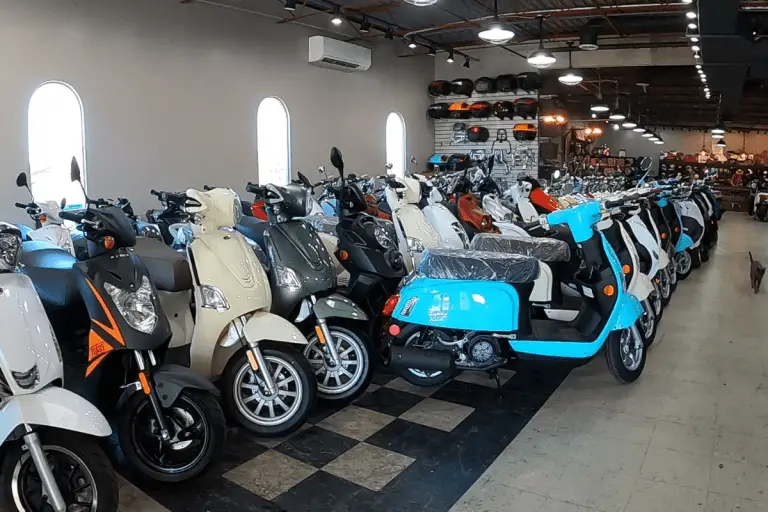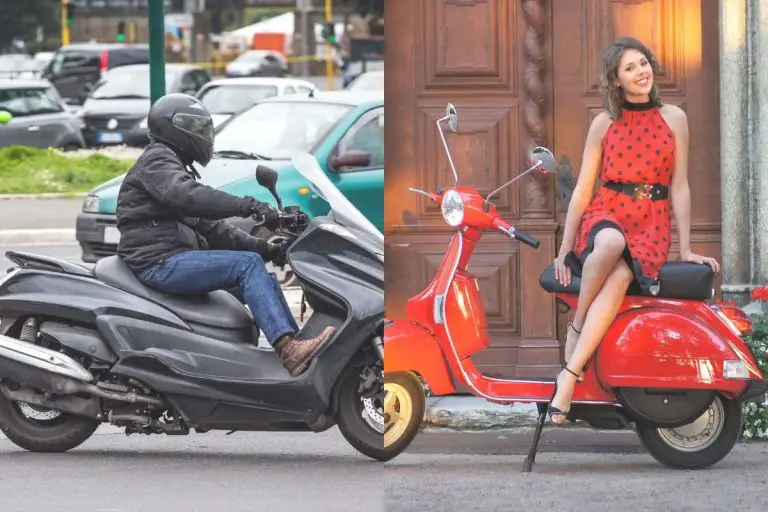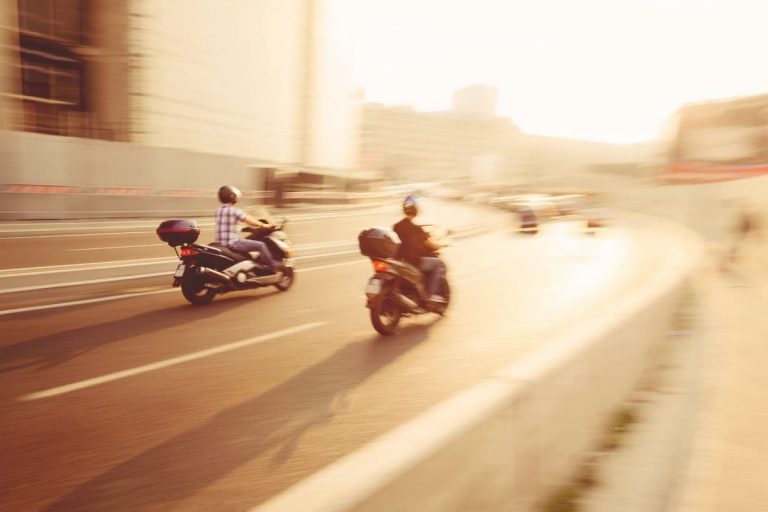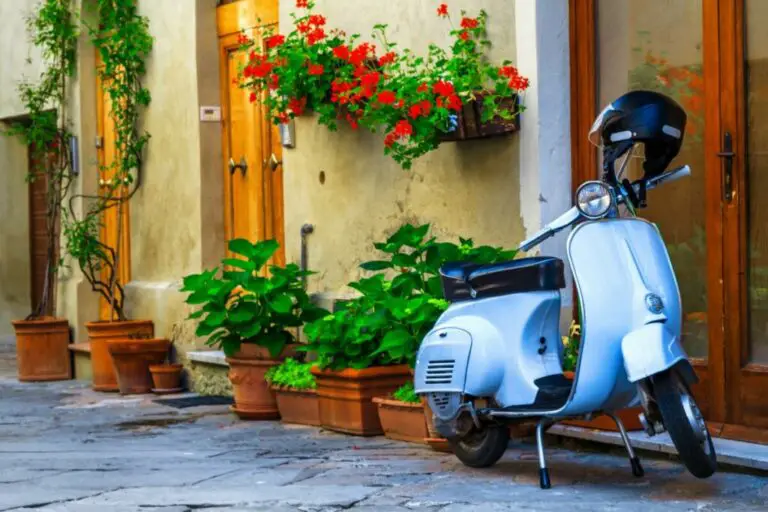There are a variety of scooter sizes to choose from in the 49cc and 50cc engine size range of motor scooters, and they seem to be the most plentiful option if you’re looking to rent or buy one. They are the smallest motor size available, so they are clearly not going to win a race (unless you’re racing another 50cc). That doesn’t make them any less fun for zipping around town!
Most 49cc and 50cc scooters have a published top speed of 30 mph with Vespa models going up to 40 mph. Manufacturers have factory speed and horsepower restrictions to max out at 30 mph to comply with state licensing requirements as 50cc scooters generally do not require a special driver’s license to operate at these limits. Those with the restrictions are called mopeds. However, without the restriction, the engines are capable of going up to 50 mph and are out of the moped designation.
Scooter vs Moped
The terms ‘scooter’ and ‘moped’ get thrown around interchangeably, but there is a distinction that is important to this conversation. Mopeds are scooters simply restricted to 31 mph or less with an engine displacement of 50cc or less. In general, both are lightweight, automatic motorcycles. Mopeds just have engine limitations to be labeled as such. This matters for state requirements on licensing, so just a heads up as we dive into this further.
Is there a difference between 49cc vs 50cc?
Let’s start with what cc means. It’s the engine displacement meaning, how much of an air and fuel mixture an engine displaces. The higher the number, the more power, and therefore speed available to the engine to propel you forward.
Whether someone refers to a scooter as a 49cc or 50cc just know that they are essentially the same thing. Just take it back to elementary school, and sometimes people tend to round up or down. In looking at the average engine displacements across Lance, Vespa, Honda, and Genuine, the average published engine displacement is 49.7. Round that number up, and we’re talking a 50cc. None are lower than 49.5, so they all get the perk of rounding up. The 49/50cc is displacing the same amount of air and fuel for scooting around.
List of Manufacturer Speed Maximums
Seeing as a scooter is a source of transportation, the manufacturers are required to list a maximum speed that is safe for riders to reach, and their components are designed for the speeds they provide. Below are published top speeds for 50cc scooters.
- Lance Powersports: 30 mph
- Genuine Scooter Company: 30 mph
- Honda: 35 mph
- Vespa: 40 mph
What Happens if You Go Beyond Those Published Max Speeds
Be careful, of course. Know the limits of what you’re riding. Let’s assume you’re up for derestricting your scooter’s top speed regulator. If you check out Genuine Scooter Company’s FAQ, they even mention their dealers will help you out with this. We’re now moving beyond the 30 and into the 40-50 mph range. What do you need to know?
From a safety perspective, the faster you go on two wheels, the more control you will need in general. That’s a general rule of thumb, but work into the speed and see how your scooter moves while in low traffic areas first.
Also, 50cc scooters are designed for those max published speeds, so it stands to reason that the scooter’s components are equipped for those speeds. Holding your scooter at its true max for extended periods puts a strain on the engine. It just won’t last you as long if you keep the pressure on it. In addition, things like the tires are rated for the max speed. If you exceed this, you run the risk of tire damage and an opportunity to injure yourself.
None of this means you can’t deregulate to get some speed. Just a few words of caution to be careful and know the limits of what you’re riding and how.
Four-Stroke vs Two-Stroke
This aspect came as a surprise to me, but if you’re looking for more speed and power, the 2-stroke will be the winner. Essentially, the 2 stroke works twice as hard and therefore has more oomph. The 4-stroke is more efficient doing its job, but it doesn’t have more potential for that oomph as it’s 2-stroke predecessor.
So what does this matter to the top speed of your scooter? Well, nothing unless you derestrict your scooter’s speed. If you are cruising around on a 4-stroke, derestricting the motor only gives you up to a 5 mph bump. A 2-stroke can give you up to a 15 mph bump. That’s a big difference if you’re looking for more. The 4-stroke will use less fuel, but it won’t zip the same way as a 2-stroke.
Keep in mind that derestricting your scooter means you aren’t riding a moped anymore, and you’ll technically need to look into your state’s requirements for licensing if you exceed the moped status and graduate into full-on scooter riding.
Considerations & Benefits to These Speed Limitations
If you are keen on the smaller engine size, you will find that the 50cc will save you some money over the larger motor sizes. If you’re looking to save money, this is an option as long as the 30 mph is in line with the roads you expect to be riding around on. If the speed limits on your roads are generally 45 mph with drivers usually going 60, you’ll be out of your depth even if you derestrict the speed of your scooter.
Many states do not require special licensing if you stay in the moped status. I still recommend a motorcycle safety course regardless of your state’s requirements, but I am all for avoiding my state’s Department of Public Safety (DPS) office if possible. This comes in handy, as well, if you’re in a touristy spot where there are more of these scooters at your disposal. If you know how just sign that paperwork, hop on and ride!
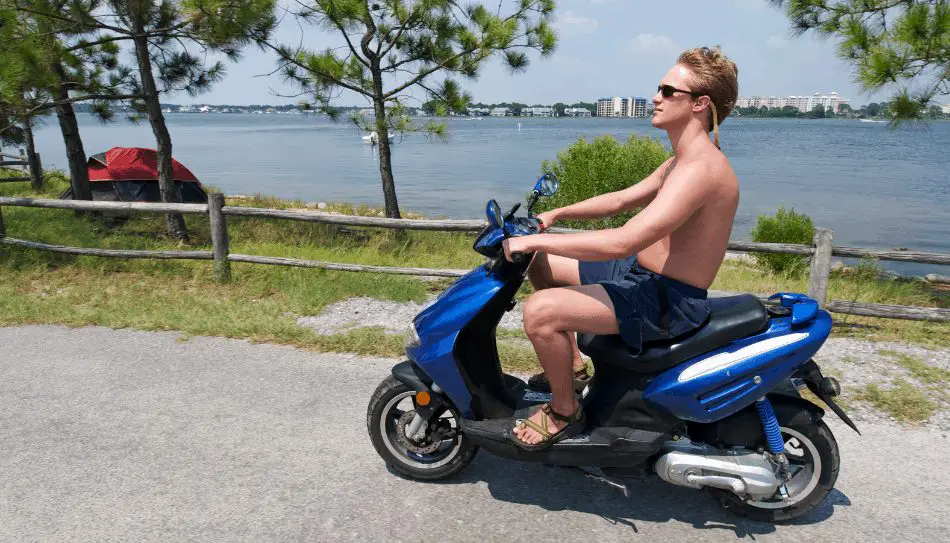
One last benefit here is for newer riders. You might take some comfort in the slower ride. Cruise along and feel that wind at a pace more comfortable for you, so it is a great entry point for a hesitant scooterist.
So Who Should Buy a 50cc?
So the speed of a 50cc scooter is in that 30mph range. Even if you derestrict or go with a Vespa model, you are bumping up to 40-ish mph. For this engine size to work for you, the local speed limits need to be in this range. That’s why you’ll find these scooters more frequently in tourist areas and inside of cities such as Portland, Oregon.
I am in a suburb of Houston, and I would only be able to ride within the boundaries of my neighborhood with the speed limit of a moped-style scooter. To leave my neighborhood, I need to be able to go the speed limit of 45 mph. That said, the speed limit “in these parts” is not a maximum but culturally a minimum. To safely scoot (and even drive), I go 50-55 mph just to keep up with the traffic and minimize aggressive driving that inevitably occurs if I actually go the speed limit.
I know my situation may not match yours, but I say this to help you make sure you are thinking through the conditions where you will scoot around. If it is truly 30mph in your neck of the woods, you’ll be solid.

